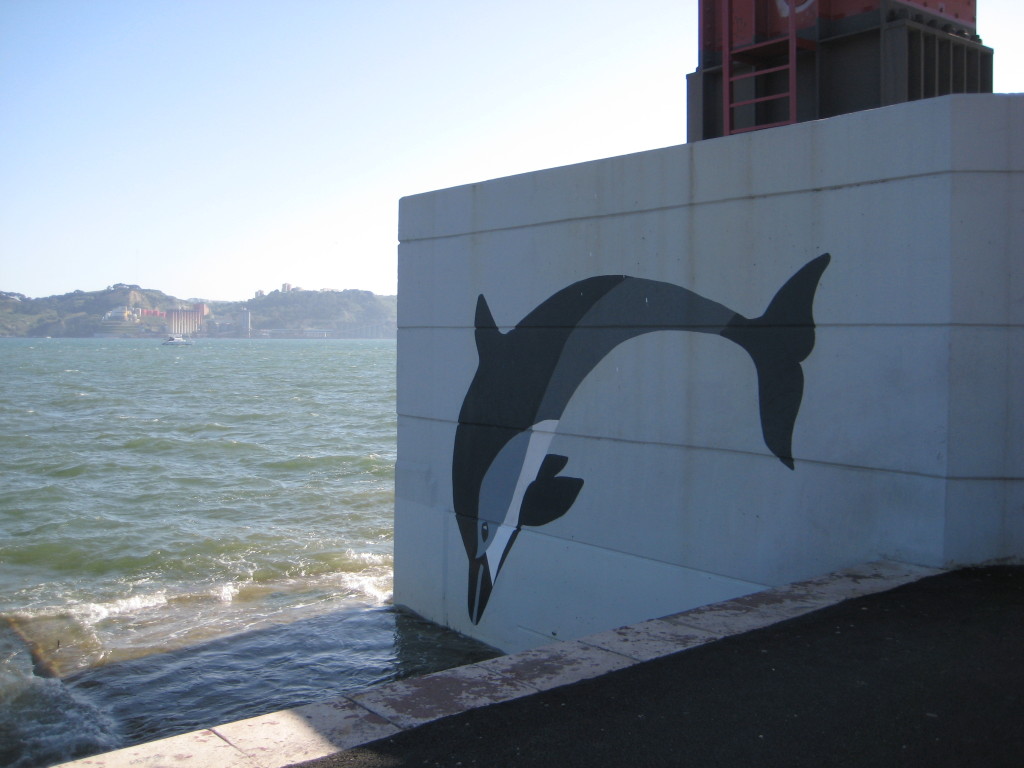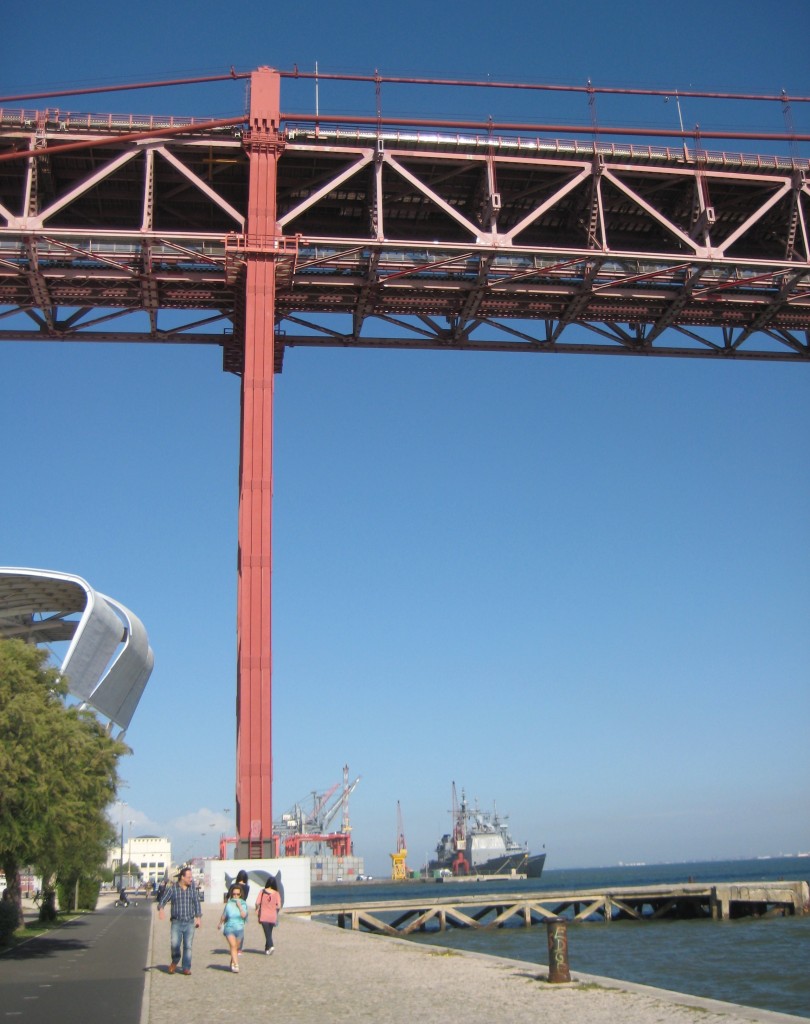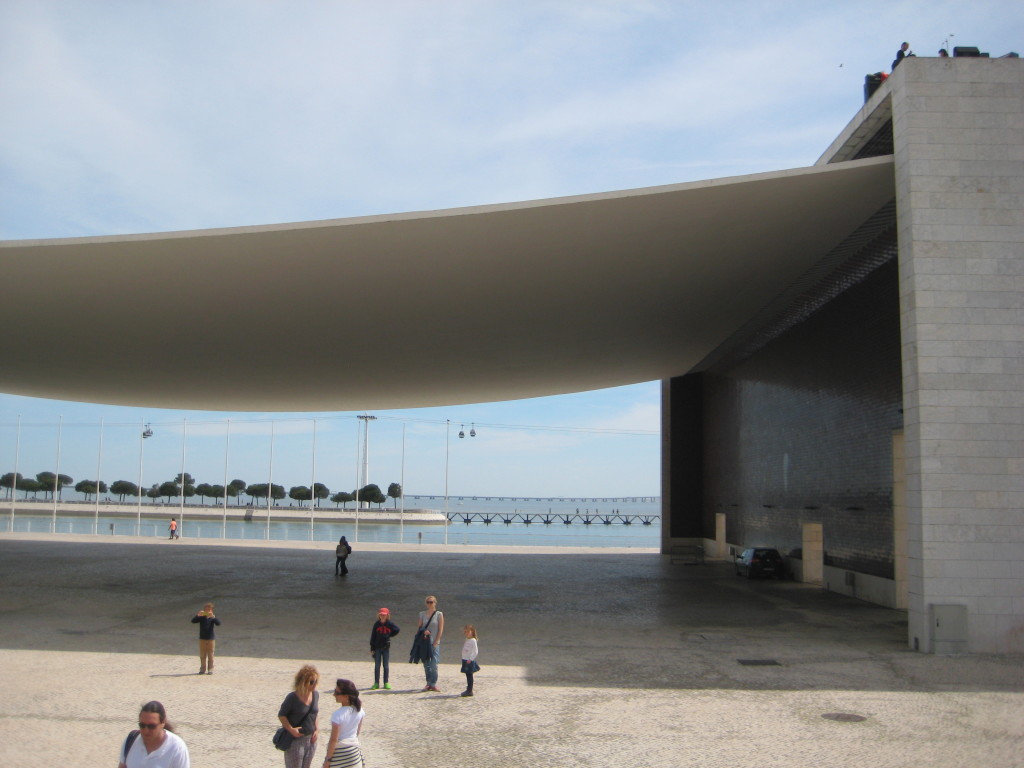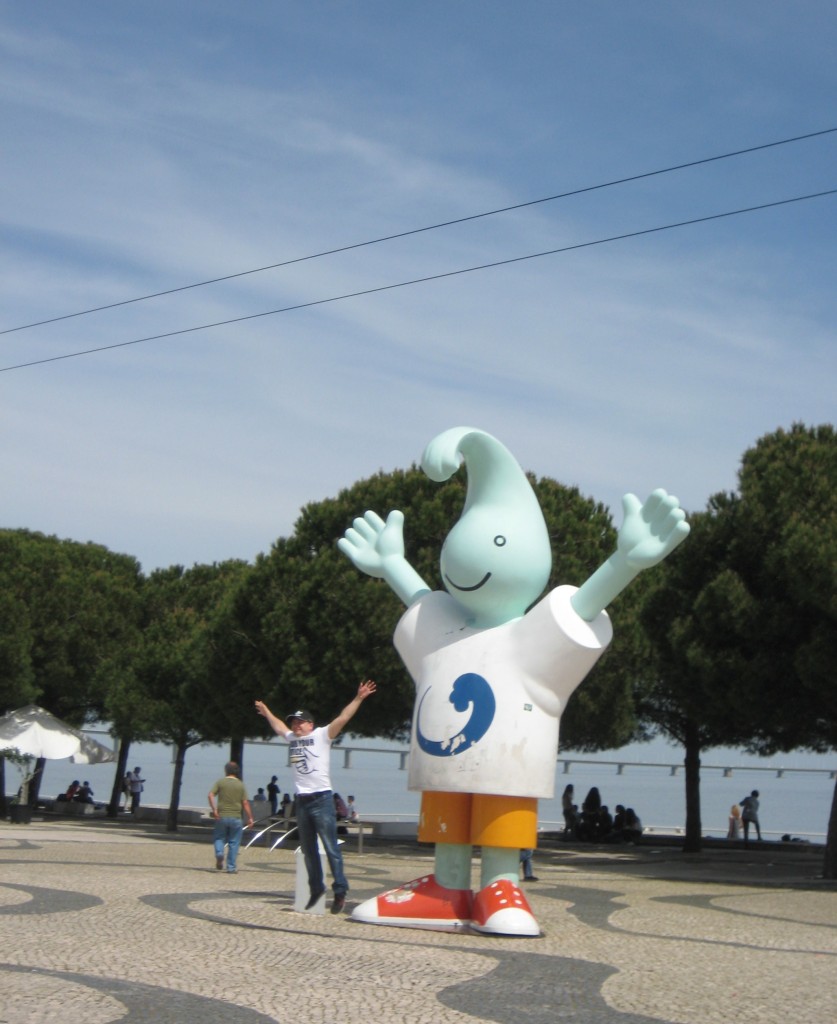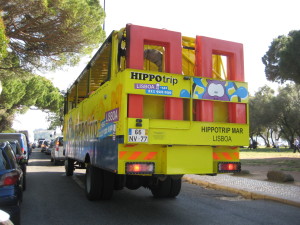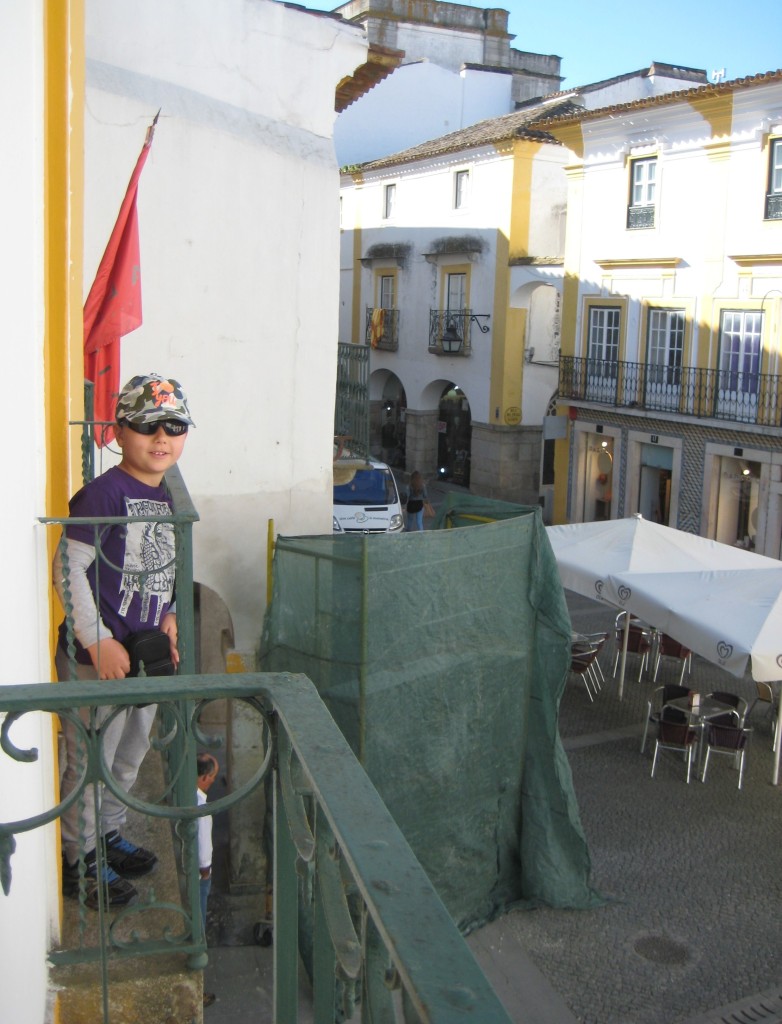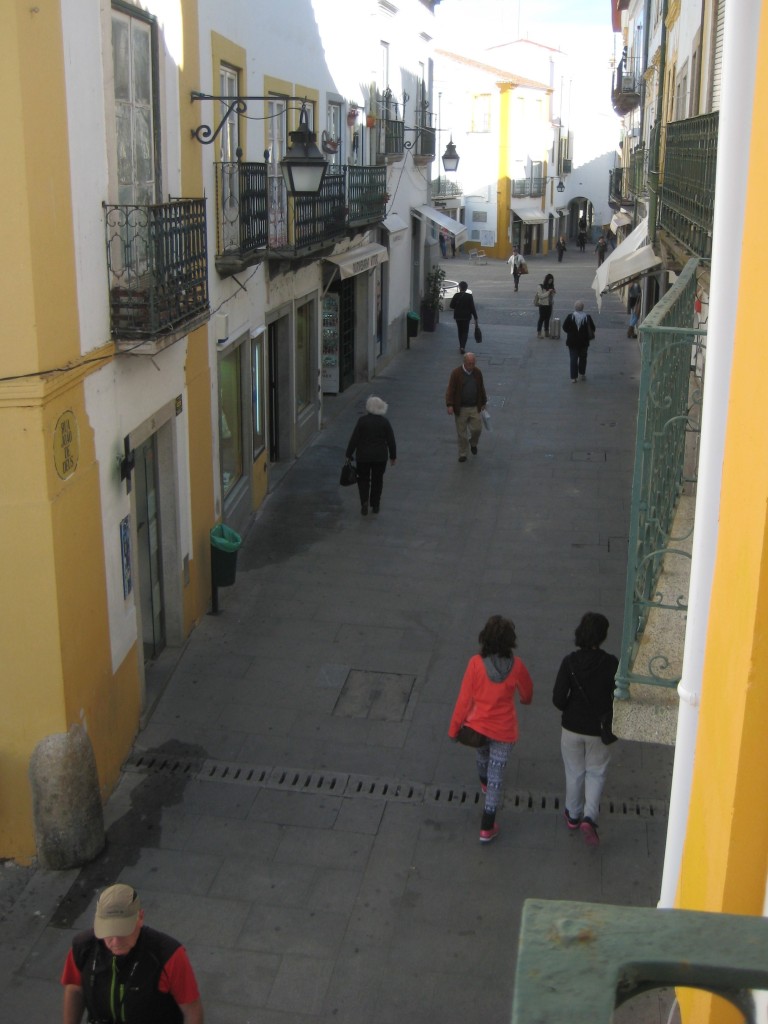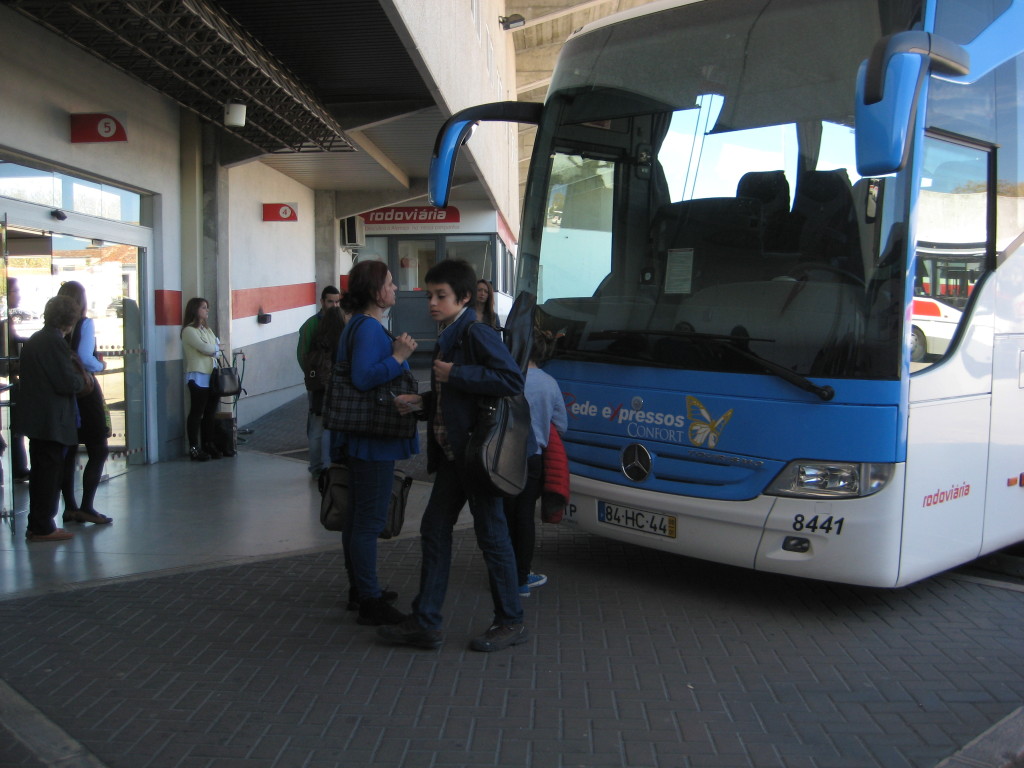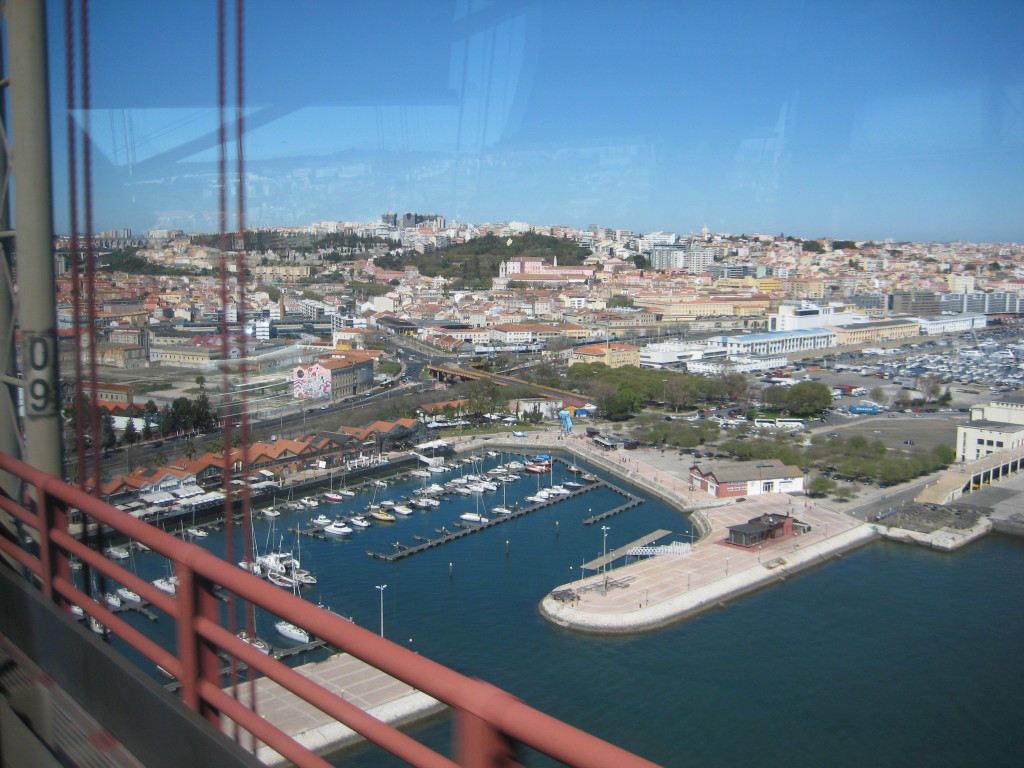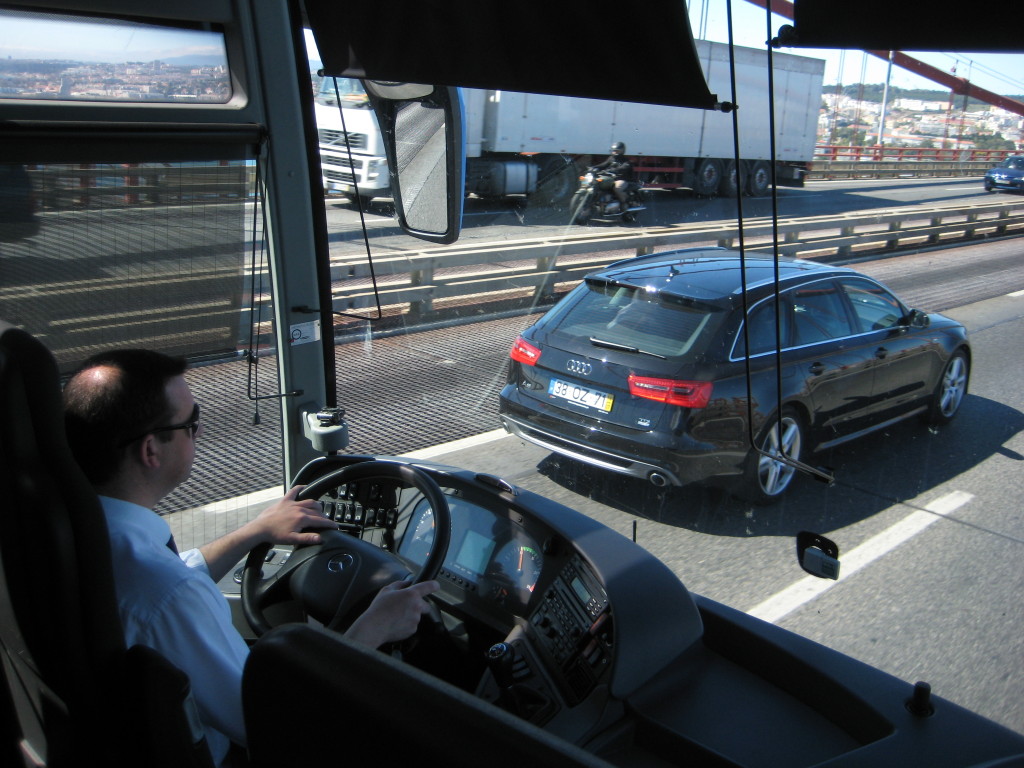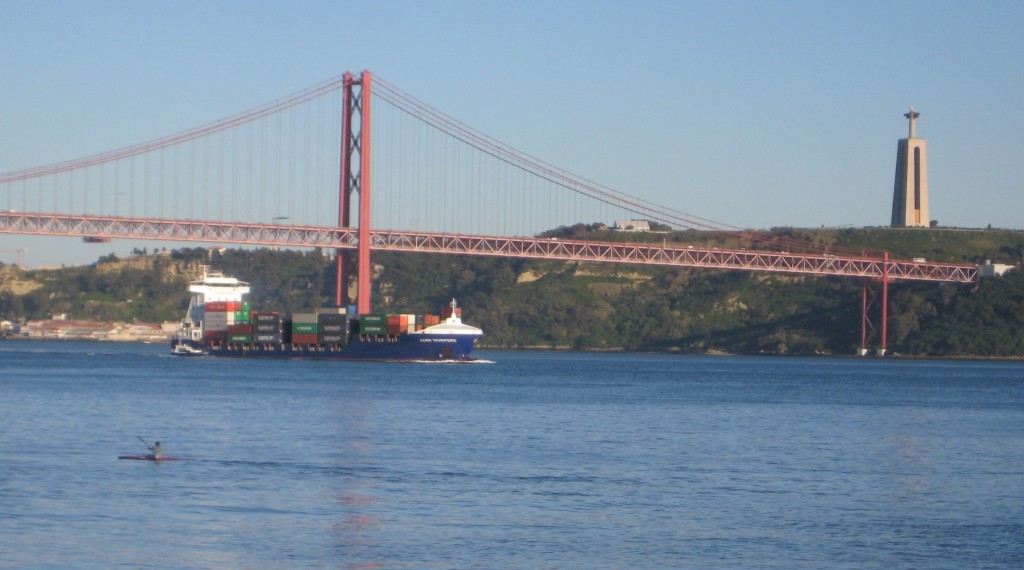A little tardy with the posts, aren’t I!
Ah, Lisbon! The capital of Portugal, population around 560k, with the surrounding area adding up to about 2.8million – 27% of the country’s population. One of the oldest cities in the world and the oldest in western Europe, predating London, Paris and Rome by centuries. So, there is a lot of history here, along with castles, forts, palaces, museums, and… bakeries:-) I’ll do my best to give you our take on this beautiful city.
Compared to Madrid – the only other large city we’ve visited this trip, Lisbon has a much more relaxed and friendlier feel to it. Madrid just has more tension. And even though it is a big city, Lisbon doesn’t feel overwhelming. It’s easy to navigate, and we don’t feel awkward standing on a street corner pouring over a map. Odds are you aren’t alone – there seem to be a lot of tourists in town. Don’t know if this is a typical crowd, or because it’s spring/Easter break.
Tour book advice to leave to the car at home and use public transportation and/or walk is right on. What follows are some of the different ways to get around town.
See? Checking out the map. Note the trees in bloom.
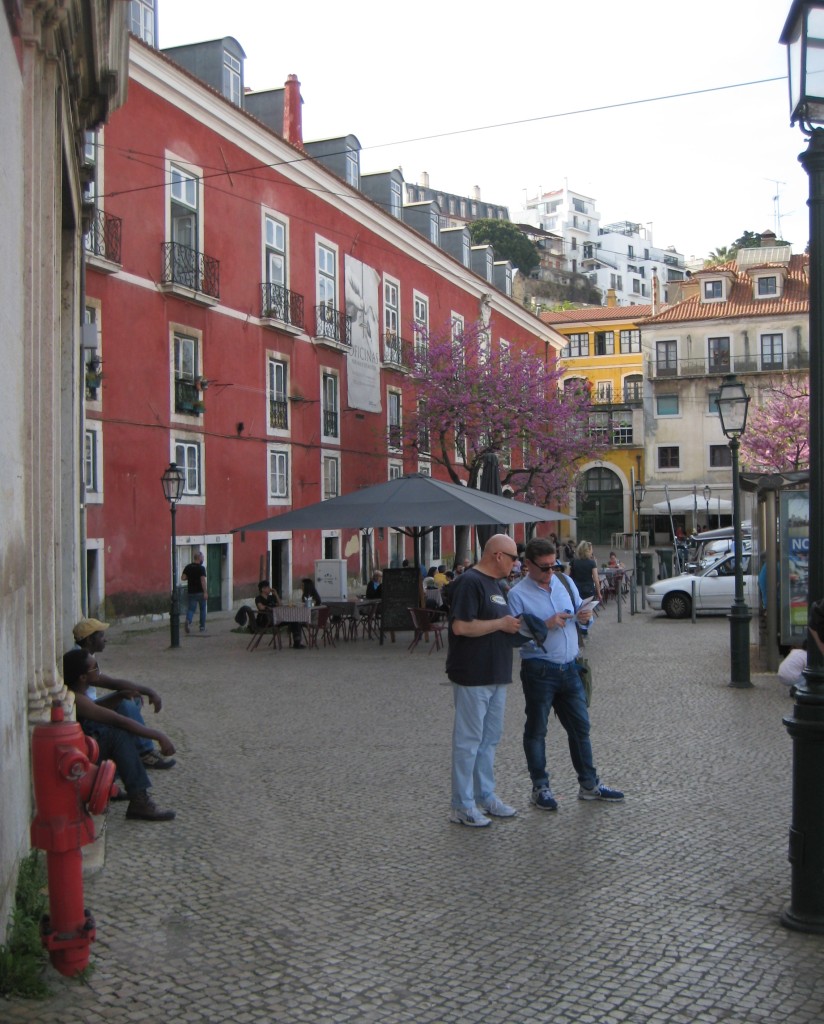
Electric Trams! Some of the oldies are still in service, and always seemed crammed. Portugal is built on 7 hills, and I hear these are perfect for steep climbs. We’ve seen them navigate tight corners where busses and the newer, longer trams (next photo) likely couldn’t make it. We have one (the #18) about 3 blocks from our house – haven’t used it yet.
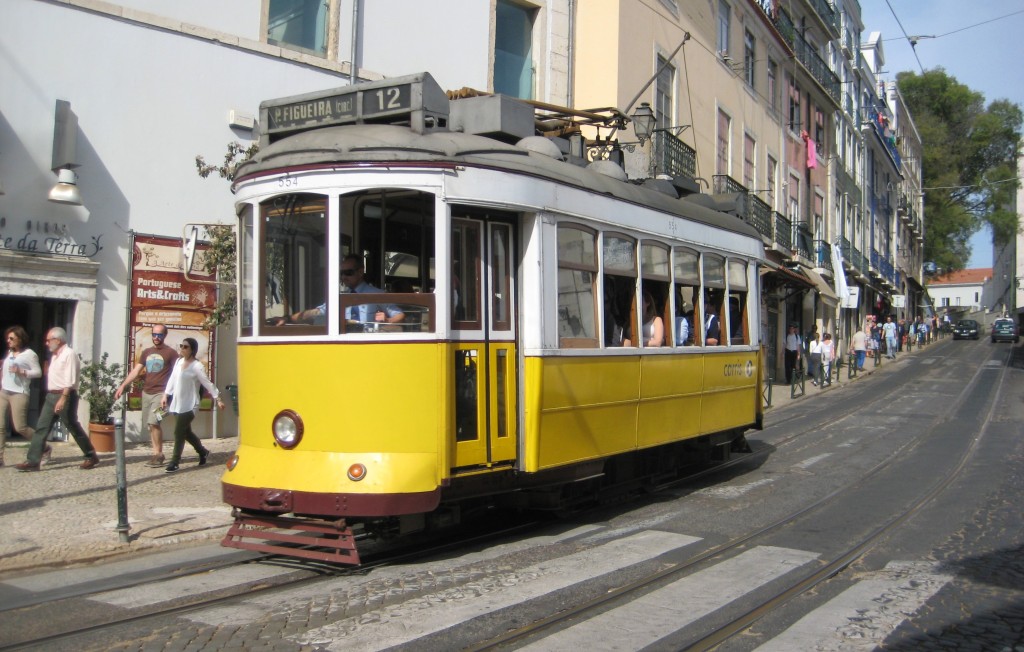


Rentals: We’ve seen bikes with electric ‘boost’ motors, and these
“Go cars”.
 Bring a friend for when you need reverse.
Bring a friend for when you need reverse.
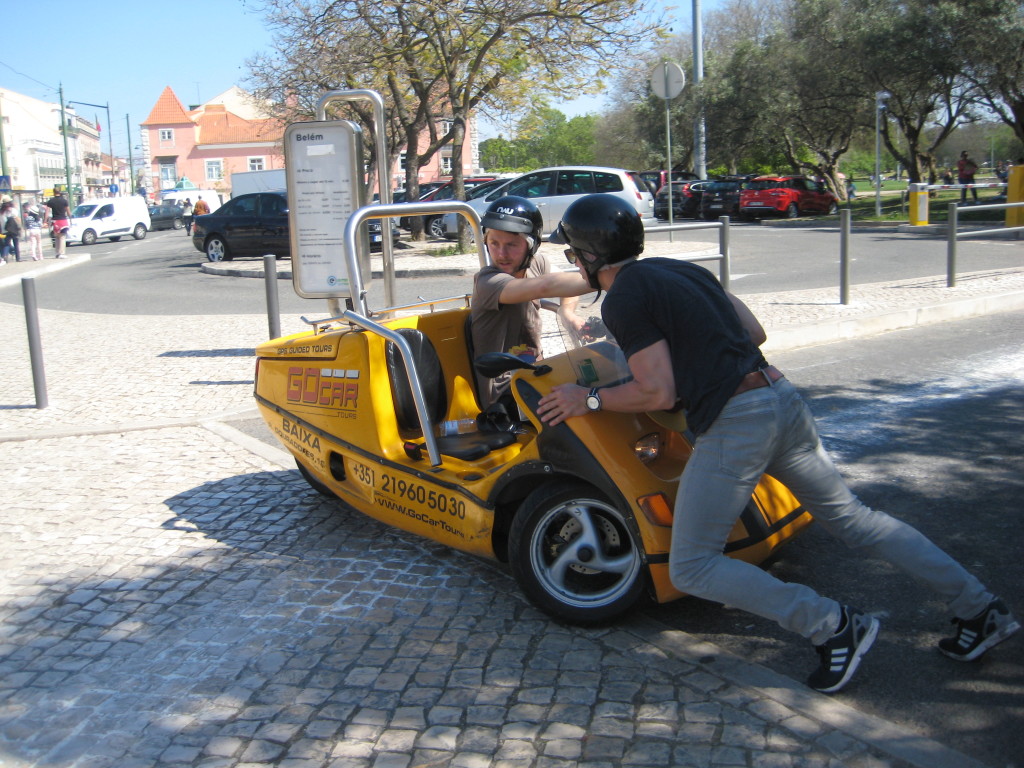
Hop-on-Hop-Off busses. We did this. For $20, you have 2 days of riding on a couple of popular routes. The whole circuit takes from 1.5 to 2 hours (depending on the route) and you can get on/off at any of the 20-something stops. Max wait for the next bus is about 30 minutes. It was a good way go get an overview and lay of the land. Earphones allowed you to listen to the canned tour information in your native language -no guide at the front of the bus.

Of course, if you’ve got work to do , just bring it along. Free Wi-Fi on board if you need it. (I think she’s reviewing a real estate offer!)
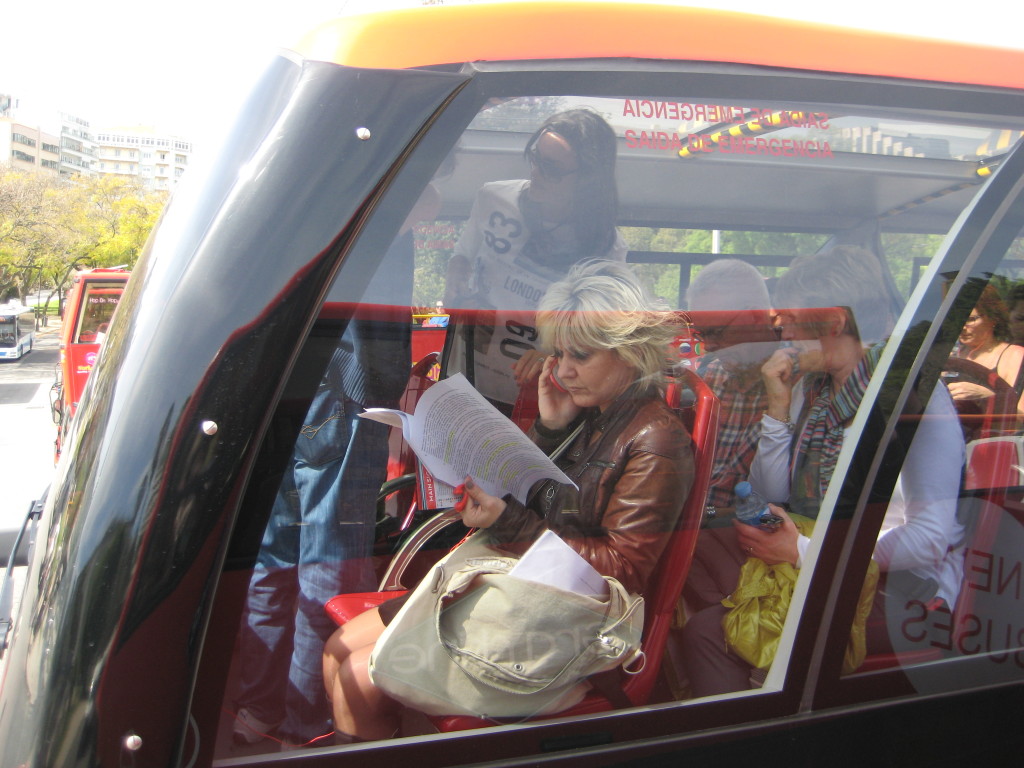
We’ll take the train to Oporto (Port) in 10 days. Not sure which train station that will be, but this one, the Rossio station, is certainly beautiful. The Starbucks in front of it kind of kills the mood.
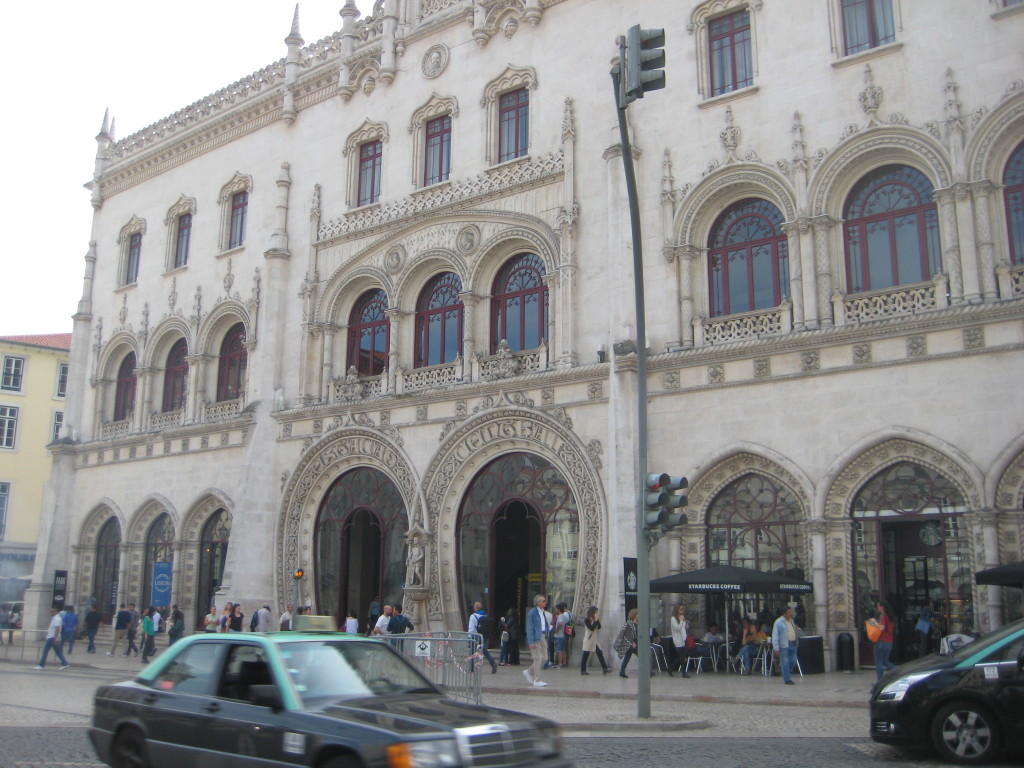
Rent a Tuk-tuk with your own personal driver. Larger models are available, some very artistically decorated.
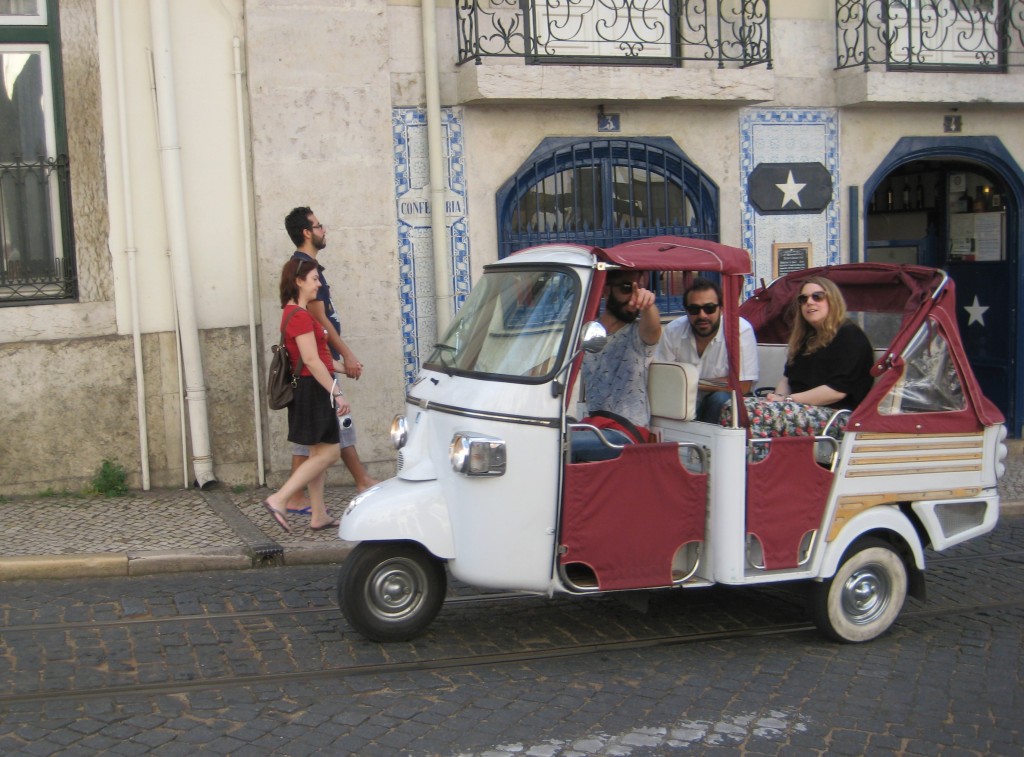 Similar to the Duck ride in Seattle, Lisbon has the “Hippotrip”- on land and sea (2nd photo – a bit in the distance).
Similar to the Duck ride in Seattle, Lisbon has the “Hippotrip”- on land and sea (2nd photo – a bit in the distance).
As with all cities, there are city buses, a subway system, and taxis. Walking has been our preferred mode, as then we don’t feel sooooo bad about indulging at dinner.
I’ll save the ancient elevator and funiculars for another post. – Safe travels – Laura


![300px-MargaretCafe_PasteisDeNata[1]](http://bashack.com/wp-content/uploads/2015/04/300px-MargaretCafe_PasteisDeNata1.jpg)


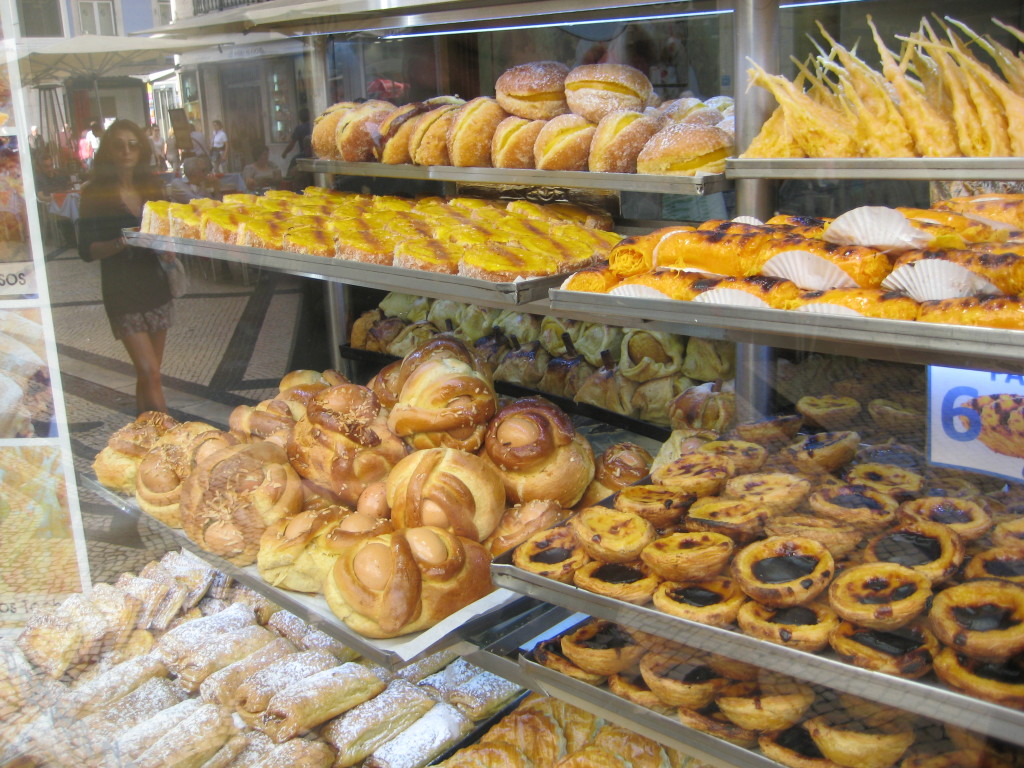
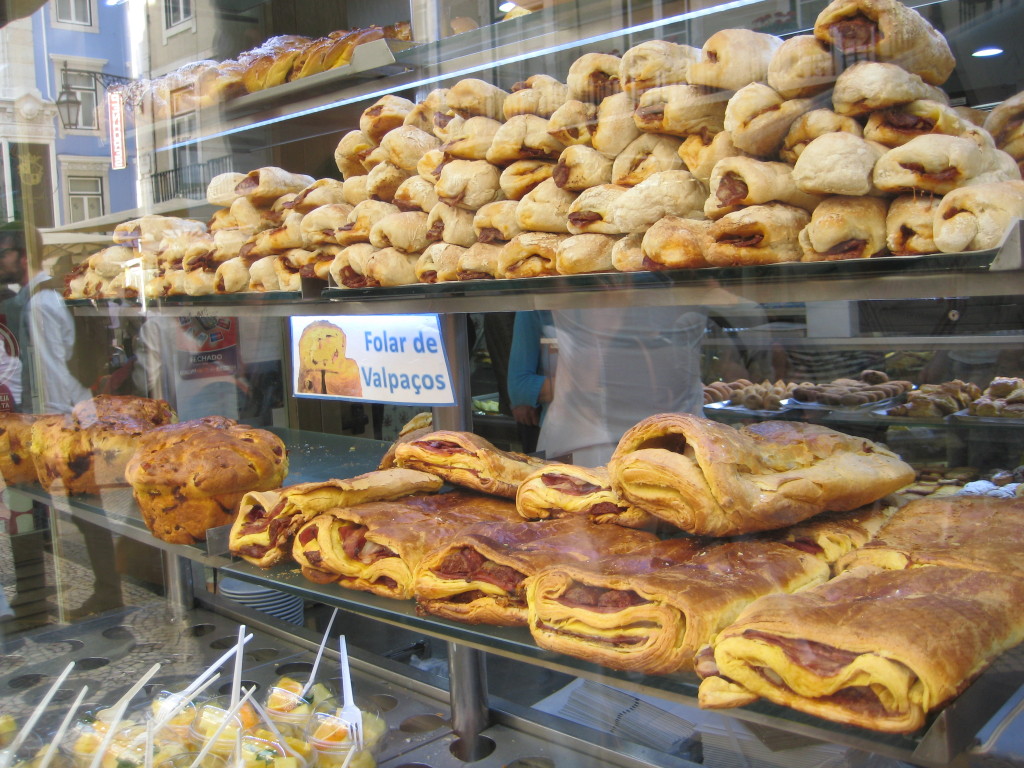
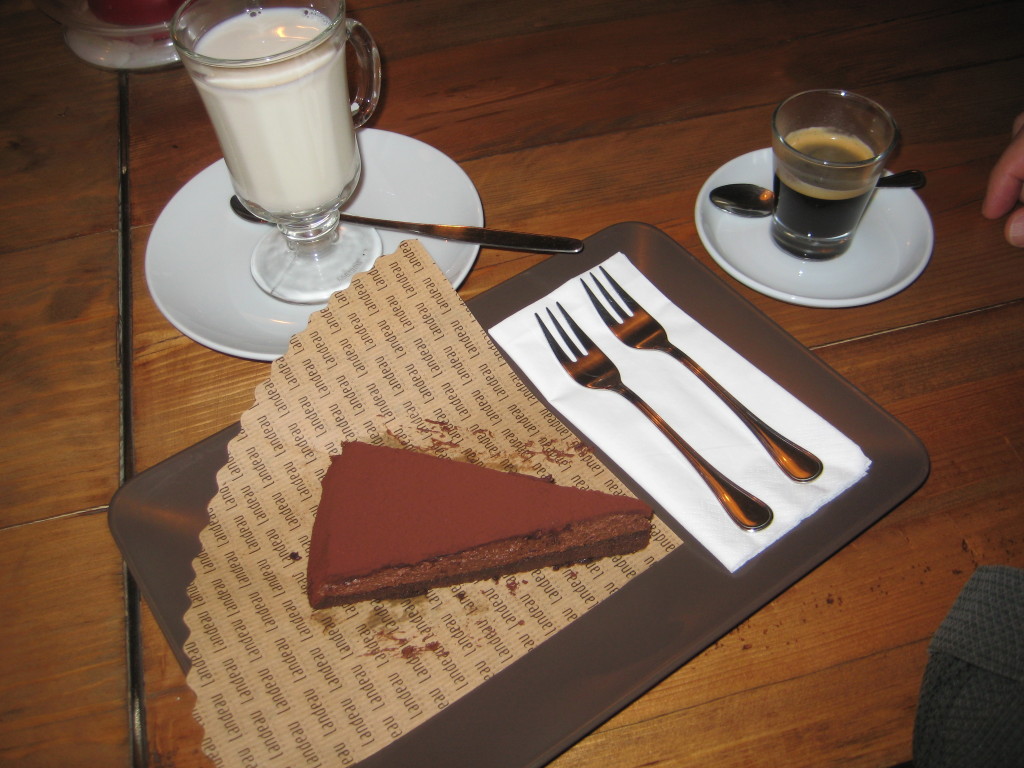
![230px-PA2900302_galo_emiliarocha_medio[1]](http://bashack.com/wp-content/uploads/2015/04/230px-PA2900302_galo_emiliarocha_medio1.jpg)

